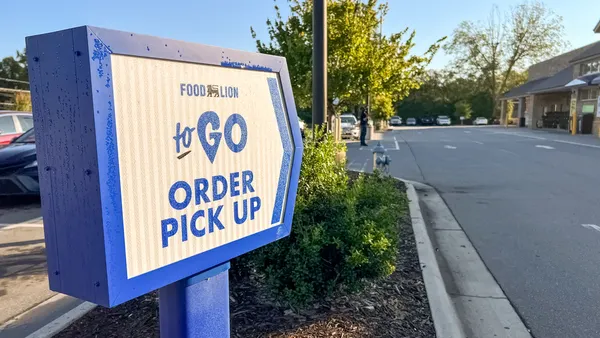Dive Brief:
- Average order value for online grocery hit a record high of $95 in August with active shoppers placing an average of 1.6 orders a month, according to the latest grocery shopping survey from Brick Meets Click and Mercatus.
- Consumers are showing consistent reliance on online grocery services. About 75% of customers are “extremely” or “very likely” to repeat a purchase with their most recent online grocery service provider again within 30 days.
- The monthly survey also found that delivery and pickup sales totaled $5.7 billion in August, down from a peak of $7 billion in June, as shoppers become less worried about the virus.
Dive Insight:
While shopper worry over coronavirus drove a dramatic surge in online grocery buying with a peak earlier this summer, their fears are on a steady decline. The survey found shopper concern over contracting the virus peaked at 47% in April but was down to 38% in August. David Bishop, partner at Brick Meets Click, noted in a statement that this decline was expected as stay-at-home orders and in-store restrictions eased.
Now several months into the pandemic, consumers are well past the point of adoption in online grocery and have integrated it into their regular shopping routines. At this point, many have likely tried more than one service and have developed a preference for a provider.
With the increase in online grocery shopping, customers will develop higher expectations of their grocer when it comes to e-commerce, Bishop said in the report. Rather than rest on their recent successes, however, grocery companies have an opportunity to keep improving the experience for their customers.
Additionally, Mercatus president and CEO Sylvain Perrier said in the report that the growth in repeat purchases indicates grocers are succeeding in customer acquisition as well as converting existing customers. To keep them coming back even as their virus concerns subside, Perrier noted retailers will have to offer a differentiated experience.
Today’s online grocery landscape is drastically different from the one that existed a year ago, having grown from 16.1 million active users last August to 37.5 million this August, or 29% of all U.S. households, according to the research.













